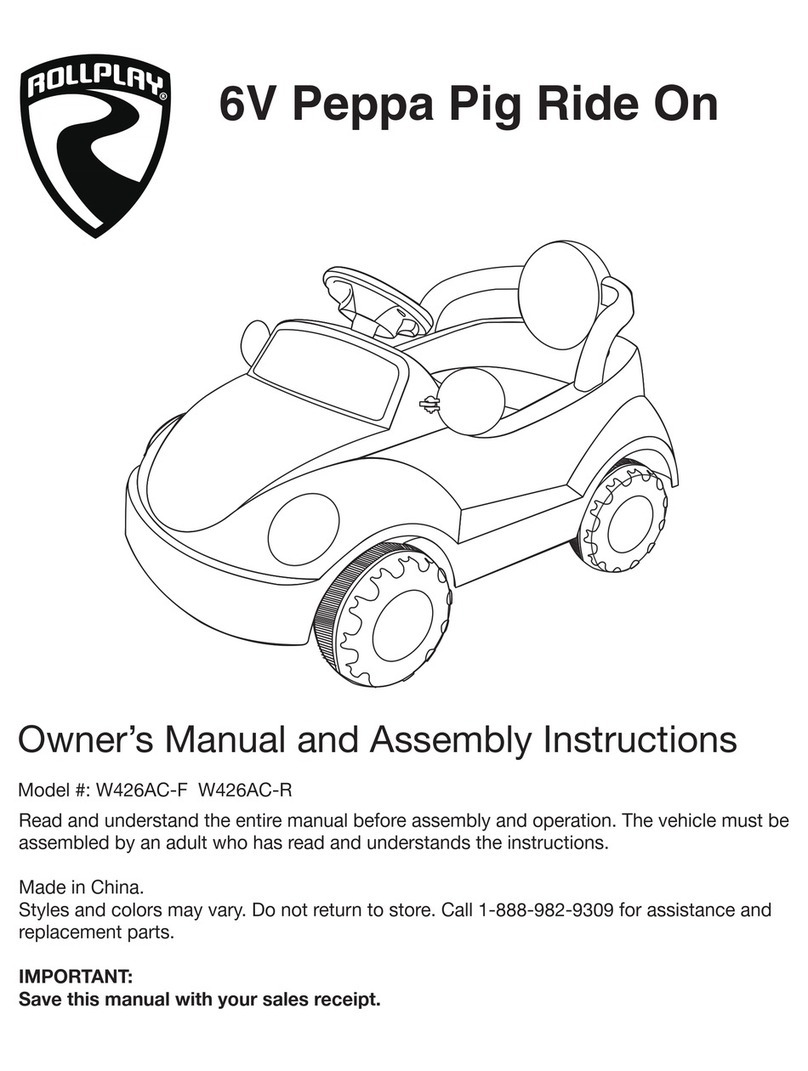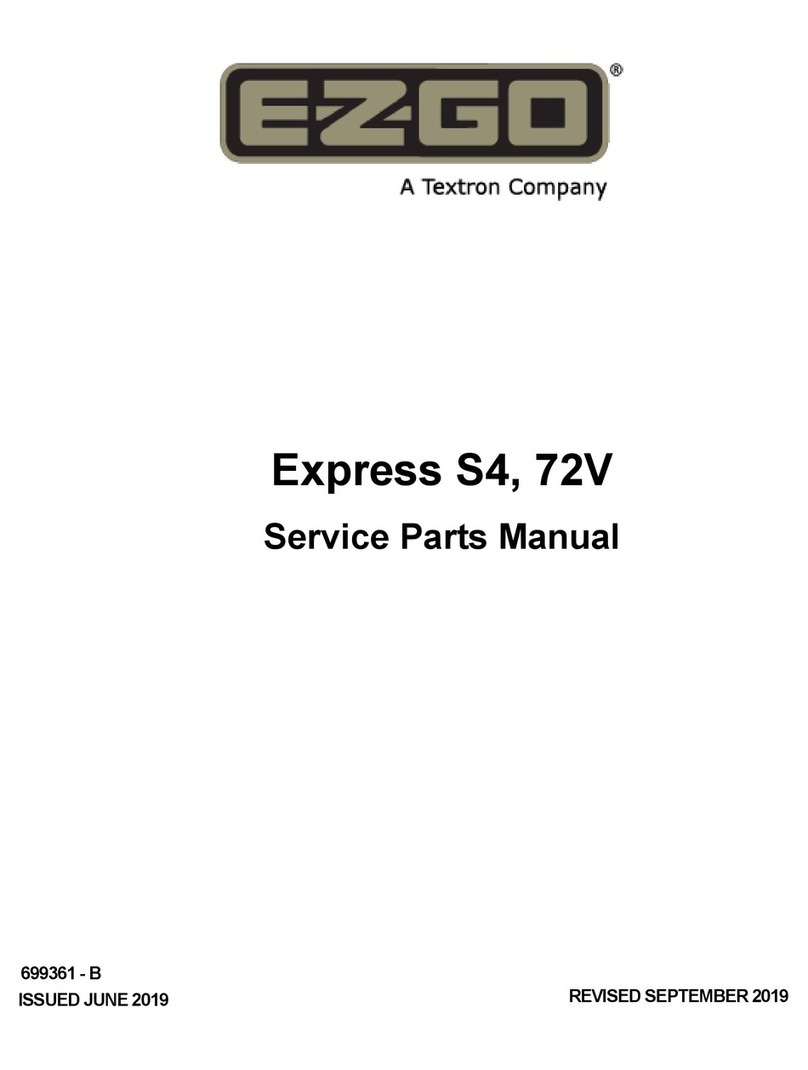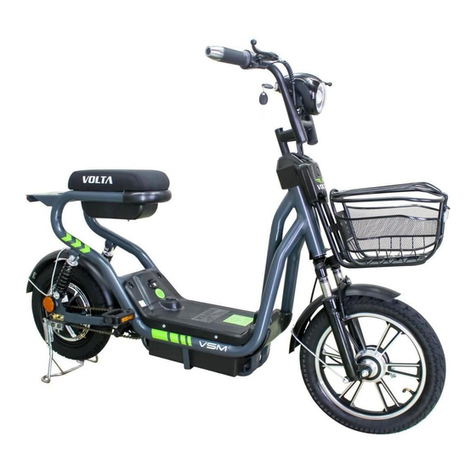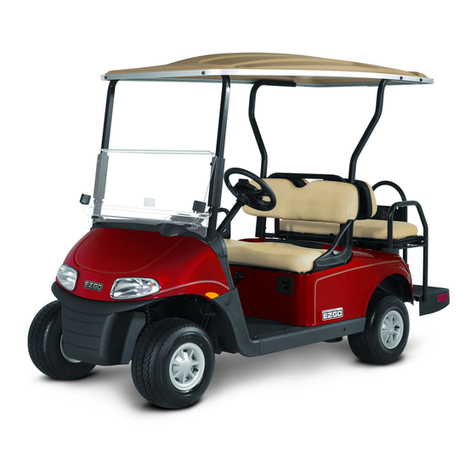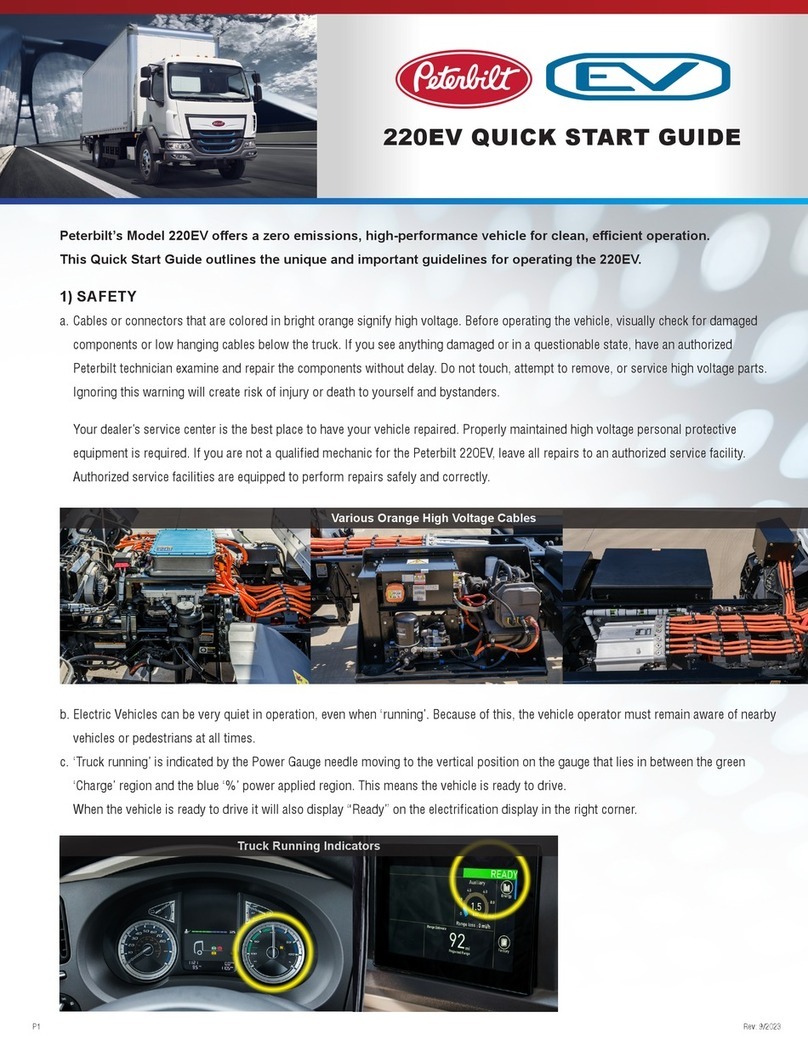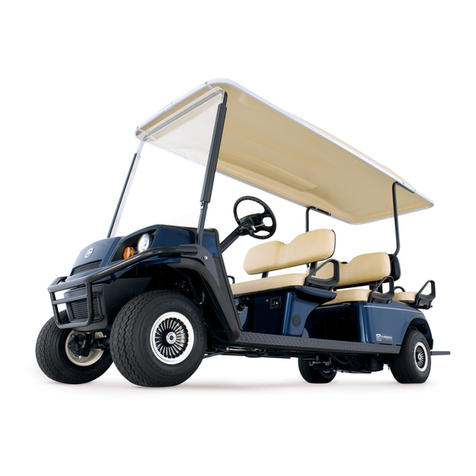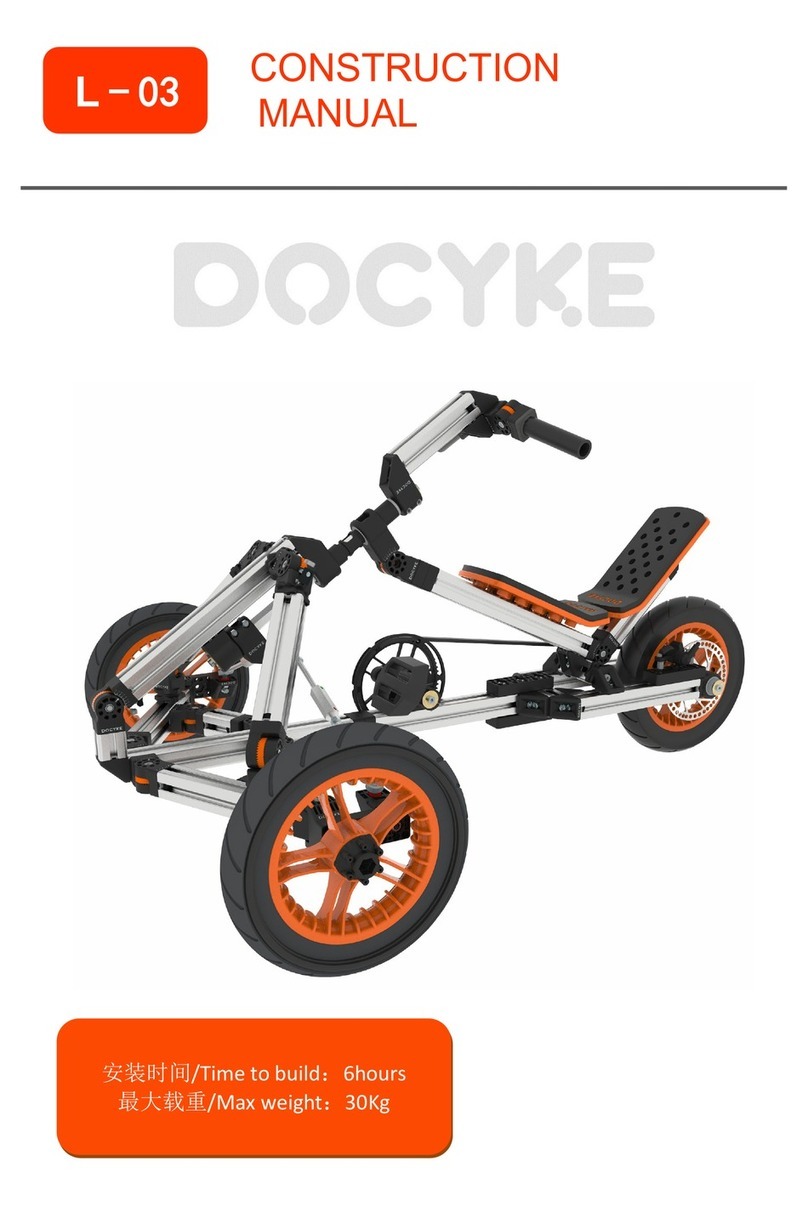Charging
• PREVENT FIRE AND ELECTRIC S OCK:
- Use the only rechargeable battery and charger supplied with your vehicle.
NEVER substitute the battery or the charger with another brand. Using
another battery or charger may cause a fire or explosion.
- Do not use the battery or charger for any other product. Overheating, fire or
explosion could occur.
- NEVER modify the electric circuit system. Tampering with the electric
system may cause a shoc , fire or explosion or may permanently damage
the system.
- Do not allow direct contact between battery terminals. Fire or explosion can
occur.
- Do not allow any type of liquid on the battery or its components.
- Explosive gasses are created during charging. Do not charge near heat or
flammable materials. Charge the battery in a well-ventilated area ONLY.
- NEVER pic up the battery by the wires or charger. Damage can occur to
the battery and may cause a fire. Pic up the battery by the case ONLY.
- Charge the battery in a dry area ONLY.
• Battery posts, terminals and related accessories contain lead and lead
compounds, chemicals nown to the State of California to cause cancer and
reproductive harm. Wash hands after handling.
• Do not open the battery. Battery contains lead acid and other materials that
are toxic and corrosive.
• Do not open the charger. Exposed wiring and circuitry inside case may
cause electric shoc .
• Only adults may handle or charge the battery. NEVER allow child to handle
or charge the
battery. Battery is heavy and contains lead acid (electrolyte).
• Do not drop the battery. Permanent damage to the battery could occur or
cause serious injury.
• Before charging the battery, chec for wear or damage to the battery,
charger, its supply cord and the connectors. DO NOT charge the battery if
any damage to parts has occurred.
• Do not allow the battery to drain completely. Recharge the battery after
each use or once a month if not used regularly.
• Do not charge battery upside down.
• Always secure the battery with the brac et. Battery can fall out and injure a
child if vehicle tips over.
• The POWER SWITCH must be turned in OFF position when charging.
• Before the first use, you should charge the battery for 4-6 hours. Do not
recharge the battery for more than 10 hours for first use.
• When the vehicle begins to run slowly, recharge the battery.
• After each use or once a month minimum recharge time as 8 to 12 hours,
less than 20 hours at most.

